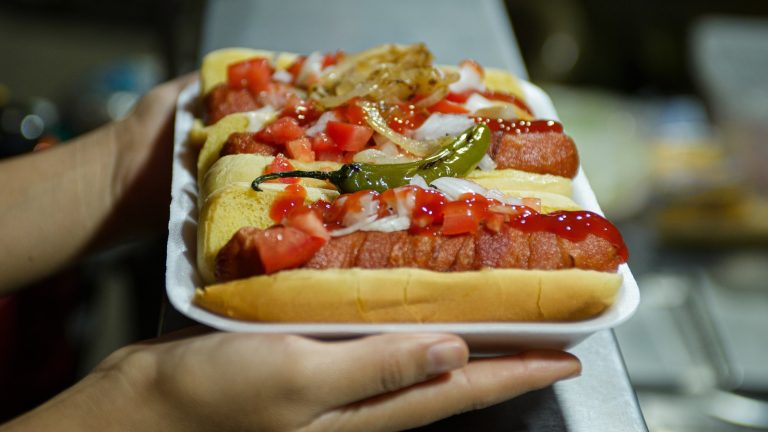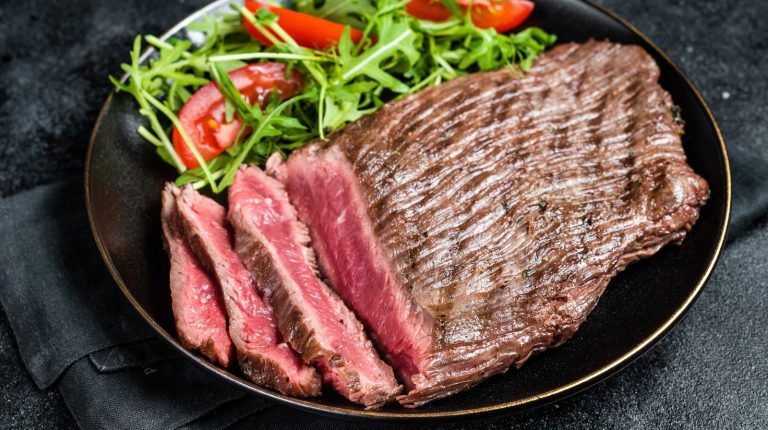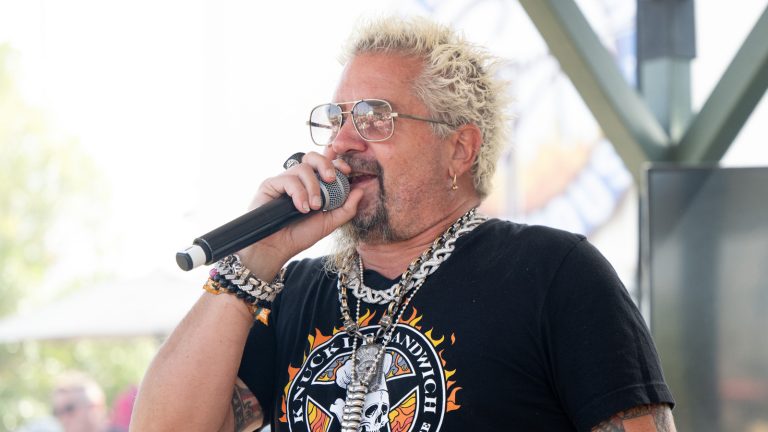The aroma of sizzling steak, the warm glow of low lighting, and the familiar comfort of leather booths — there is a certain nostalgia that comes with steak house chains. As a kid, it would transform ordinary evenings into special occasions and marked life’s achievements. A good report card, a Little League victory, or a job promotion meant piling into the car and heading out for a steak. The atmosphere was relaxed enough that kids could be themselves. The menu rarely changed, the portions were always generous, and the prices remained within reach of middle-class budgets. This predictability wasn’t a drawback but a feature.
However, many once thriving steak house’s have disappeared from the landscape. These vanished restaurants, fallen victim to mismanagement, changing tastes, or economic pressures, often fade from our collective memory until something unexpectedly brings them rushing back — a familiar logo spotted in an old photograph or the mention of a signature dish.
Come with us on a trip down memory lane as we explore the restaurants that once dominated American dining. Perhaps you’ll find yourself nodding with recognition as these names conjure warm memories. Or maybe you’re encountering these vanished icons for the first time, curious about what made them so beloved. While most have disappeared completely, a few are hanging on — sometimes by a thread — kept alive by loyal patrons and the powerful pull of nostalgia that continues to draw diners through their doors.
Valle’s Steak House
When Donald Valle opened his tiny 12-seat café in Portland, Maine back in 1933, few could have predicted it would grow into one of the Northeast’s most beloved steak house chains. This Italian immigrant who arrived in America in 1912 built a restaurant empire that would eventually span 32 locations up and down the East Coast by the late 1970s.
Valle’s operated on a straightforward but effective business model. It focused on high volume, fast turnover, and hearty portions that kept customers coming back. The restaurant’s expansion took off in the mid 1960s when Valle opened three steak houses around Boston. The company went public in 1968, and by the following year, Valle’s was serving an impressive 200,000 customers weekly, employing 1,300 people, and had even issued over 6,000 of its own credit cards.
But the good times couldn’t last forever. When Valle passed away in 1977, the family faced crippling inheritance taxes. Combined with economic challenges including the gas crisis, soaring inflation, and rising labor costs, the business began to struggle. The family eventually sold to a private investment group, but the decline continued with gradual liquidation of the restaurants.
Many former patrons still fondly remember Valle’s specialties. As one customer reminisced on a Visit Portland Maine facebook post, “I remember their Friday night specials from the 1960s; two 1 pound lobsters, baked potato, and choice of salad for $9.99. I used to go there every Friday evening.” The last Valle’s Steak House closed its doors in 2000, ending a 67 year run that left lasting memories for generations of East Coast diners.
Lone Star Steakhouse
When entrepreneur Jamie Coulter opened the first Lone Star Steakhouse in Winston-Salem, North Carolina in 1989, he was betting Americans would fall in love with a casual dining experience centered around mesquite-grilled steaks and Texas roadhouse charm. That bet paid off spectacularly, at least for a while.
The 1990s were golden years for Lone Star. Forbes magazine named it the best small company in America for three consecutive years from 1993 to 1995. By 1994, Fortune ranked it sixth on its list of the 100 fastest-growing companies in the country. Through aggressive expansion, Lone Star grew to 182 restaurants by the end of 1995, generating $340 million in annual sales.
Walking into a Lone Star meant immediately getting a bucket of peanuts while waiting for your table, and customers were encouraged to toss the shells right onto the wooden floor. Every hour on the hour, the country music would suddenly blast through the speakers, and servers would drop everything to assemble in the aisles between tables for a rousing performance of “The Boot Scootin’ Boogie.”
By March 1997, Lone Star had expanded to 205 locations, but trouble was brewing. Market saturation combined with rising food prices and labor costs began taking a toll on profits. After reaching a peak of over 260 locations, the chain began a long, slow decline. The company filed for bankruptcy in 2017, and today, there’s just one lone survivor keeping the brand alive, thousands of miles from the mainland United States, in the Pacific Island territory of Guam.
Mr. Steak
Founded in 1962 in Colorado Springs, Mr. Steak quickly gained a reputation for no-frills reliability. Diners could enjoy USDA choice steaks without the high prices of more upscale establishments, making it a popular choice for families and casual diners. The 1960s and 1970s marked a period of impressive growth for the chain, expanding steadily until its peak in the early 1980s, when Mr. Steak owned and franchised approximately 300 restaurants nationwide, establishing itself as a familiar presence in the American restaurant landscape.
However, the success didn’t last. As public perception began to shift away from red meat, Mr. Steak attempted to adapt by dramatically expanding its menu options. According to Jim Russo, president of Omnivest/Mr. Steak speaking to Bnet in 1993, this diversification ultimately backfired. “Our name was Mr. Steak, but all of a sudden we became ‘Mr. Chicken,’ ‘Mr. Fish’ and ‘Mr. Salad,'” he explained. Rather than attracting more customers, this identity crisis only served to confuse them.
The decline was dramatic. By 1992, the once mighty chain had dwindled to just 57 locations. That same year, investment firm Omnivest purchased the struggling brand and attempted to revitalize it with an upscale concept called Mr. Steak’s Firegrill. This new iteration featured an exposed kitchen with an oak grill, fiber optic ceiling lights that changed from sunrise to sunset, and Western-themed decor complete with sound effects in the bathrooms. Despite these ambitious renovation efforts however, the chain continued its steady decline and the final Mr. Steak closed its doors in 2009.
Victoria Station
At Victoria Station, customers would walk through a bright red British phone booth to enter a restaurant built from actual vintage train cars. This was the brainchild of three Cornell University students. Bob Freedman, Dick Bradley, and Peter Lee first conceptualized the restaurant as a class project, then turned it into reality when they opened the first Victoria Station in San Francisco in 1969.
The original restaurant was assembled from five authentic boxcars and two cabooses, creatively repurposed into a themed restaurant that captured the essence of London’s famous Victoria Station. The interior was decked out with antique railroad memorabilia, clocks, and artifacts that transported diners to the golden age of rail travel. The menu featured hearty American fare with prime rib, steak, ribs, and shrimp scampi taking center stage.
Country music legend Johnny Cash recorded a special album titled “Destination Victoria Station” in 1975, featuring new recordings of his classic train songs. The album could only be purchased at the restaurants themselves. By 1978, the chain had expanded to 97 locations stretching from California to Massachusetts. One of the Los Angeles restaurants even became the highest grossing restaurant in the entire United States for a brief period.
Unfortunately, the 1980s brought financial derailment. There was a slow decline until the very last Victoria Station, located in Salem, Massachusetts, served its final meal in 2017, bringing an end to this beloved dining institution nearly five decades after its first boxcar opened for business.
Bugaboo Creek Steak House
Walking into a Bugaboo Creek Steak House in the 1990s was a childhood dream come true, though by today’s standards it might feel more like walking onto the set of a low budget horror film. This Canadian mountain lodge themed restaurant chain opened its first location in Warwick, Rhode Island in 1993 and eventually spread across six north-eastern states including Maine, New York, New Hampshire, Massachusetts, Delaware, and Maryland.
The main attraction wasn’t the food but the cast of somewhat jerky, talking mechanical animals that would suddenly spring to life around the dining room. There was Bill the Buffalo, Moxie the Moose, various woodland creatures that would pop out of barrels, and Timber the Christmas tree who lit up and shared nature facts about Canada in a voice that sounded like it was coming through a drive-thru speaker.
What seemed magical to ’90s children would likely terrify today’s iPad-raised kids. In a Reddit thread about the restaurant, former patrons said: “As the chain aged, some of the animatronics broke down and never got repaired,” resulting in half-functioning animals that would twitch or make noises at random intervals.
Despite the potentially nightmare inducing decor, the food had its fans. Reddit users fondly remembered, “The brown bread… the mud slide dessert… the big cookie dessert.” Adults could enjoy “Moose Juice,” which was “soaked pineapple slices in a big jar of vodka.” Bugaboo Creek filed for bankruptcy in 2010, and by 2016, all locations had closed their doors for good.
Beefsteak Charlie’s
There are a lot of good steak houses in New York City, but back in the day the place to eat was Beefsteak Charlie’s. It opened 1910, by restaurateur Charles W. Chessar, after a nickname given to a local newspaper sports editor. This humble beginning would evolve into a dining institution that lasted nearly a century, finally disappearing around 2001-02. The original restaurant was decidedly no-frills. With a sawdust covered floor to absorb spills and racetrack pictures decorating the walls, Beefsteak Charlie’s offered casual, unpretentious dining.
As the restaurant expanded into a chain, it became known for its generous all-you-can-eat offerings. The salad bar became legendary, and the giant bowls of unlimited pre-peeled shrimp were a hit. Adults could indulge in unlimited beer, wine, and sangria, making it an affordable night out for families.
By 1984, Beefsteak Charlie’s had reached its zenith with 68 locations, primarily concentrated in the New York area. Unfortunately, the good times wouldn’t last. A series of bad business mergers in the mid 1980s started the chain’s decline. By 1989, the number of locations had shrunk to 35, and the company was forced to file for bankruptcy.
The 1990s saw the slow, steady disappearance of Beefsteak Charlie’s restaurants across the region. One by one, the remaining locations shuttered its doors until the final restaurants closed in the early 2000s. Though the unlimited shrimp, beer, and sangria are now just memories, Beefsteak Charlie’s remains a nostalgic touchstone for many New Yorkers and East Coast families.
Steak and Ale
Founded in 1966 in Dallas, Texas by Norman Brinker, the Steak and Ale restaurants were built to resemble mid-17th century English inns, featuring Tudor style architecture, wooden ceiling beams, stained glass, and rustic, dimly lit interiors. The theme even extended to the staff, who wore Tudor style costumes.
The concept proved remarkably successful. By the 1980s, Steak and Ale had expanded to nearly 280 locations nationwide. The menu featured several standout items that developed loyal followings, particularly the Kensington Club steak, a specially marinated sirloin that became the chain’s signature dish. Other favorites included the Hawaiian Chicken topped with grilled pineapple rings and the complimentary loaves of honey wheat bread served warm to each table. Perhaps most significantly, Steak and Ale pioneered the restaurant salad bar, an innovation that would eventually become standard across the industry.
Despite its popularity, Steak and Ale couldn’t escape economic pressures. The chain filed for Chapter 7 bankruptcy in 2008, closing all remaining 58 locations and ending a 42-year run that had helped shape American casual dining.
The story doesn’t end there, though. In a surprising turn of events, after a 16 year absence, Steak and Ale is attempting a comeback. The first new location opened in July 2024 in Burnsville, Minnesota, with plans for additional restaurants in development. But whether this resurrection can succeed in today’s competitive restaurant marketplace remains to be seen.
Hilltop Steak House
Founded in 1961 by Frank Giuffrida, The Hilltop’s Western themed decor was impossible to miss, starting with its towering 68 foot neon cactus sign that glowed for miles. Life size fiberglass cows stood on the front lawn, while the interior featured totem poles, stone fireplaces, buffalo heads, and Native American figures.
At its peak in the late 1980s, Hilltop was reported to be the highest grossing restaurant in the United States, with annual sales reaching nearly $27 million. The 1,400 seat restaurant routinely filled to capacity, with lines snaking around the building regardless of weather.
The Hilltop was famous for its enormous portions and value pricing. When speaking to the Boston Globe in 1987, management proudly boasted that they spent over $15,000 annually just on doggie bags for leftover food. The marinated steak tips became so popular they essentially introduced and popularized the dish throughout New England, creating a beloved regional steak dish.
The restaurant’s success led to expansion, with several locations across New England, plus a thriving butcher shop business. However, changing demographics and increased competition eventually caught up with the steak house giant. All the Hilltop Steak House locations had closed by 2013. The flagship and last remaining restaurant on Route 1 in Saugus, Massachusetts, closed on October 20, 2013, marking the end of the iconic steak house after 52 years in business When the Weymouth butcher shop shut down in 2015, it marked the final chapter for the restaurant phenomenon that had served generations of New Englanders for over half a century.
York Steak House
York Steak House, founded in Columbus, Ohio in 1966, was once a mainstay of the American mall. Simple steak house fare was served cafeteria style in a castle themed dining room adorned with iron chandeliers, heavy wooden furniture, and even suits of armor. By 1977, York Steak House had caught the attention of food industry giant General Mills, which purchased the chain and accelerated its expansion. At its peak in 1982, nearly 200 York Steak House restaurants operated across 27 states.
However, the rise of food courts in the 1980s began to cut into York’s business. The chain that had once dominated mall dining began to contract as dining habits changed. Locations gradually closed until it seemed the concept would disappear entirely.
But one location refused to vanish. In 1989, as York Steak Houses were shuttering nationwide, long-time employee Jay Bettin purchased the W. Broad Street location in Columbus. Bettin made only minor changes over the years, adding a salad bar and brightening the dining room slightly while preserving the distinctive wood paneling and iron chandeliers that customers remembered.
For over 35 years, this last York Steak House continued operating across from what eventually became an abandoned mall, attracting both loyal regulars and curious diners seeking a taste of restaurant nostalgia. In 2024, Bettin put the restaurant up for sale as he prepared for retirement. Purchased by the owners of Starliner Diner, the new proprietors have promised to maintain both the classic menu and distinctive atmosphere, ensuring this unique piece of restaurant history will continue serving up steaks with a side of nostalgia for years to come.




